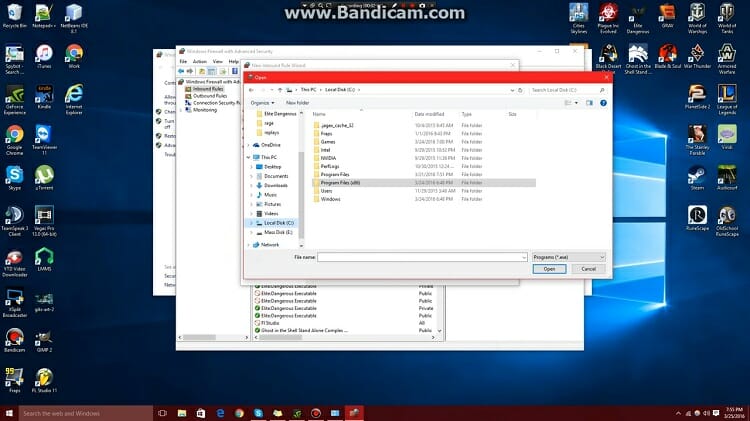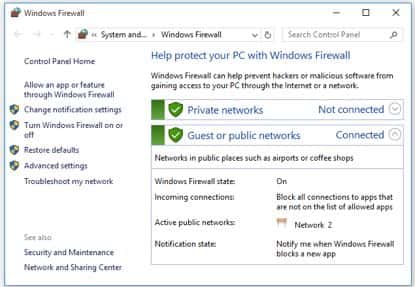

For example, suppose the currently active network profile is Domain network. netsh advfirewall set currentprofile state off – this command will disable the firewall for the current network profile that is active or connected.Using netsh advfirewall set c you can disable the Windows Firewall individually on each location or all network profiles. Turning off the Windows Firewall with the NETSH CommandĪn old but useful handy utility called netsh s ready for use to manage network configurations on a computer, or in this case, to disable the Windows Firewall. Using the command-line is at times quicker, as opposed to going to different windows location when using the GUI options.Īdditionally, the command-line options enable users to script or automate the task. The search result would show the Windows Security app, click on Open.ĭisable Windows Firewall on each network profile Using the Command-LineĪs you may already know, most, if not all, of the GUI operations in Windows, have a command-line counterpart. Launch the Windows Security app by clicking on the Start button, and start typing Windows Security.The Windows Security app is available on Windows 10, version 1703, and later. The first GUI tool to manage is the Windows Security App. Using the GUI is probably the easiest way to turn off the Windows firewall for home users. Probably the quickest way to disable the firewall is using the included GUI tools in Windows.
#HOW TO BLOCK A PROGRAM IN FIREWALL WINDOWS 10 WINDOWS 10#
One or more Windows 10 computers in the same network and joined to the domain.A Windows 2019 server that is also a domain controller.And you must have administrator permissions on those Windows 10 computers.You can do the examples here in just one computer, but some instructions are specific to remoting.




 0 kommentar(er)
0 kommentar(er)
